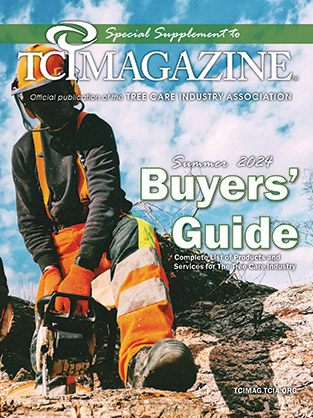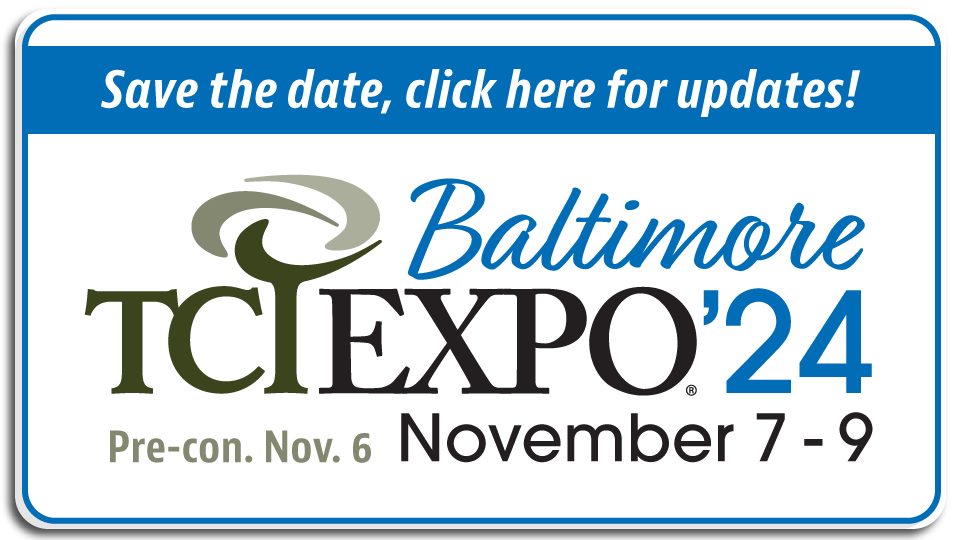Spring 2024 Regulatory Agenda Highlights Biden Administration’s Priorities
On July 5, the Biden administration released the Spring 2024 Unified Agenda of Regulatory and Deregulatory Action (Regulatory Agenda), providing insights on more than 3,500 rules at various stages of the rulemaking process across more than 60 federal departments, agencies and commissions. Since the 1980s, the regulatory agenda has been released twice a year.
TCIA reviews each Regulatory Agenda and has put together the following list of noteworthy regulations included in the current edition.
Occupational Safety and Health Administration (OSHA)
Tree Care Standard
OSHA is anticipating the release of a proposed tree care standard in December 2024. Given the inherent hazards of tree care work and the current inconsistent regulatory approach by OSHA, TCIA has been advocating for OSHA to expedite the release of this standard.
TCIA has been working with Congress to pressure OSHA to advance this rulemaking. In April, leaders of the Senate and House Subcommittees overseeing OSHA sent a letter to Assistant Secretary Douglas L. Parker urging the agency to proceed as quickly as possible, expressing concern over the lack of action despite widespread agreement on the necessity of a separate standard to save lives.
In July, TCIA’s Peter Gerstenberger testified before the House Workforce Protections Subcommittee at a hearing titled, “Safeguarding Workers and Employers from OSHA Overreach and Skewed Priorities.” He highlighted OSHA’s ongoing delays and the resulting cost to worker safety in the industry. Both Chairman Kevin Kiley (R-CA) and Ranking Member Alma Adams (D-NC) called on OSHA to move this standard forward expeditiously.
The Tree Care Standard also is listed as a priority in OSHA’s congressional budget justification for Fiscal Year 2025.
Heat Illness Prevention in Outdoor and Indoor Work Settings
One of OSHA’s top priorities under the Biden administration is a standard to regulate workplace exposure to hazardous heat. Although the regulatory agenda indicated that OSHA would publish a proposed rule in August 2024, the Agency unveiled its proposal on July 2.
According to OSHA’s fact sheet, the proposed rule would apply to all employers conducting outdoor and indoor work in various sectors. Employers would be required to develop and implement a heat injury and illness prevention plan (HIIPP) tailored to their work sites. This plan would include identifying heat hazards, monitoring heat conditions by tracking heat forecasts and implementing control measures.
The rule establishes initial and high-heat triggers, requiring control measures such as providing cool drinking water, break areas and acclimatization protocols for new and returning workers at an initial heat index of 80 F. At a high heat index of 90 F, mandatory rest breaks of 15 minutes every two hours and observation for signs of heat-related illness would be required. Employers also must take steps if an employee shows signs of heat-related illness or a heat emergency, as well as develop a heat-emergency-response plan, provide initial and annual refresher training and ensure all requirements are at no cost to employees.
In 2021, OSHA published an Advanced Notice of Proposed Rulemaking (ANPRM) on this issue, and it completed a Small Business Advocacy Review Panel (SBAR Panel) in November 2023. This panel engaged small businesses across different sectors to discuss the potential effects of a heat-specific standard. Six members from TCIA were involved in this panel, and TCIA provided comments on both the ANPRM and the regulatory framework, advocating for a flexible approach to any forthcoming standard.
Once the proposed rule is published in the Federal Register, there will be a 120-day comment period for impacted stakeholders to provide feedback.
Employee Benefits Security Administration (EBSA)
Worker Ownership, Readiness and Knowledge
The DOL’s Employee Benefits Security Administration anticipated releasing a Notice of Proposed Rulemaking (NPRM) in August 2024. It was to provide “acceptable standards and procedures to establish good-faith, fair-market value for shares of a business to be acquired by an employee stock ownership plan (ESOP).”
Employment and Training Administration (ETA)
National Apprenticeship System enhancements
On December 14, 2023, ETA issued a proposed rule to update the National Apprenticeship System. These updates seek to enhance worker protections and equity, improve the quality of registered apprenticeship programs and revise state-governance provisions. It also looks to strengthen the link between post-secondary education and registered apprenticeship through the establishment of registered career and technical-education apprenticeships. ETA was planning to publish a final rule in August 2024.
Visit TCIA’s website to learn about TCIA’s involvement with Arborist Apprenticeship.
Employer-Provided Survey Wage Methodology for the Temporary Non-Agricultural Employment H-2B Program
ETA planned to issue a proposed rule in July 2024 related to the requirement that employers pay the prevailing wage to H-2B and U.S. workers. This proposal responds to a December 2022 court ruling that found the 2015 Wage Rule’s employer-provided-survey provision did not meet the Administrative Procedure Act’s requirements for notice and comment. Employer-provided surveys are one of the methods used to determine the prevailing wage under H-2B regulations. The new rule aims to correct these procedural issues.
Department of Transportation (DOT) Federal Motor Carrier Safety Administration (FMCSA)
Controlled Substances and Alcohol Use and Testing
The Federal Motor Carrier Safety Administration was aiming to issue a proposed rule in July that would make changes to its drug and alcohol use and testing regulations. The proposed rule aims to increase the availability of driver violation information in the Drug and Alcohol Clearinghouse to help keep unsafe drivers off the road. Additionally, FMCSA proposes changes to better align Clearinghouse rules with existing drug and alcohol use and testing regulations to enhance compliance and enforcement.
DOT Office of the Secretary
Electronic signatures, forms and records storage for drug- and alcohol-testing records
The DOT and its Office of the Secretary (of Transportation, OST) delayed plans from June 2024 to December 2024 to issue a proposed rulemaking that would allow DOT-registered employers and contractors to use and store electronic documents and permit electronic signatures on forms such as the Alcohol Testing Form.
Appeals Process for Employer-Decided Refusals
DOT plans to issue a Notice of Proposed Rulemaking (NPRM) in December 2024 that would provide DOT-regulated employees with a federal administrative process for an employee to dispute an employer’s determination that the employee refused to submit to a DOT-regulated drug or alcohol test.
Department of Homeland Security
U.S. Citizenship and Immigration Services (USCIS)
USCIS is targeting November 2024 to finalize a rule to strengthen prohibitions on charging fees to H-2A and H-2B workers, institute bars for petitioners with labor violations and provide whistleblower protections. They also are adjusting grace periods, extending employment flexibility and clarifying return-transportation responsibilities. Additionally, DHS aims to improve efficiencies by removing the country eligibility requirement for H-2 petitions and simplifying the rules for resetting the three-year maximum stay period. However, there are concerns that the proposed rule’s strict compliance burdens and harsher penalties for employers could negatively impact the entire H-2 program.
Conclusion
As 2024 concludes, the tree care industry faces a changing regulatory landscape, highlighted by the latest updates from the Biden administration. TCIA will keep its members updated while advocating on the industry’s behalf. We encourage readers to remain engaged through the Association’s social-media pages and advocacy site.
Basil Thomson is a senior associate at Ulman Public Policy, TCIA’s Washington, D.C.-based advocacy and lobbying partner.




